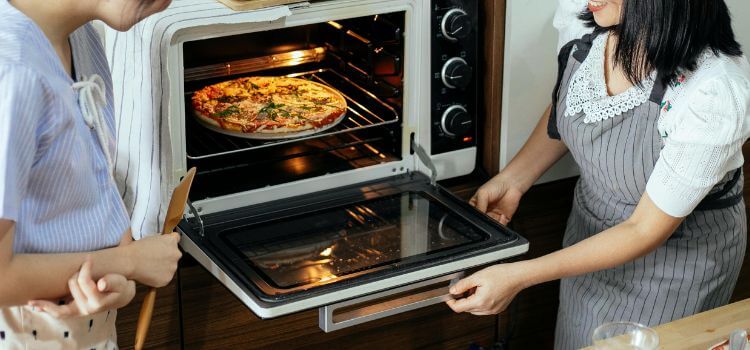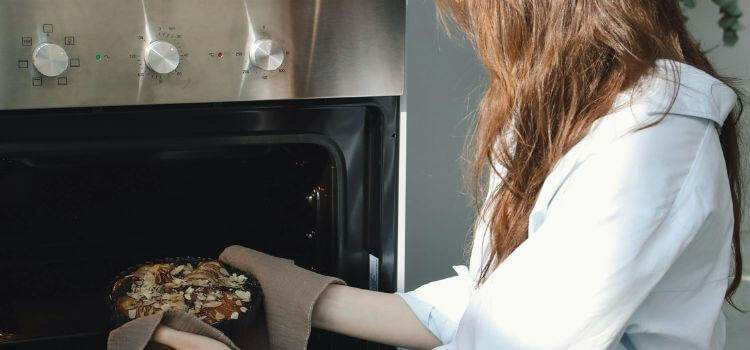Have you ever wondered how hot a pizza oven really is? The answer may surprise you! Knowing the exact temperature of your pizza oven is crucial to achieving that perfect crispy crust and gooey cheese. In this post, we’ll dive into the science behind pizza oven temperatures and give you the tips you need to make the best pizza possible. So, if you want to take your pizza game to the next level, keep reading and find out just how hot your pizza oven needs to be. Trust me, it will make all the difference in your homemade pizza!
The Ideal Temperature for Pizza
is crucial to achieving that perfect crispy crust and gooey cheese. When it comes to making the best pizza, the temperature of your oven is key. The ideal temperature for pizza is around 500-550 degrees Fahrenheit. This high heat is necessary to crisp the crust and melt the cheese just right. It gives the pizza that perfect combination of chewy, crispy, and gooey that we all love.
Trust me, getting the temperature right will take your homemade pizza game to the next level. It’s all about achieving that perfect balance of flavors and textures, and the right temperature plays a huge role in that. So, if you want to impress your friends and family with the best homemade pizza they’ve ever had, pay attention to the temperature of your oven. It may seem like a small detail, but it makes all the difference in the world. Happy pizza making!
Understanding Different Types of Pizza Ovens
The ideal temperature for pizza is around 500-550 degrees Fahrenheit. This high heat is necessary to crisp the crust and melt the cheese just right. It gives the pizza that perfect combination of chewy, crispy, and gooey that we all love. Trust me, getting the temperature right will take your homemade pizza game to the next level. It’s all about achieving that perfect balance of flavors and textures, and the right temperature plays a huge role in that. So, if you want to impress your friends and family with the best homemade pizza they’ve ever had, pay attention to the temperature of your oven. It may seem like a small detail, but it makes all the difference in the world. Happy pizza making!
How to Measure the Temperature of Your Pizza Oven
Measuring the temperature of your pizza oven is crucial in making the perfect pizza. There are a few different ways to do this, depending on the type of oven you have. For a wood-fired oven, you can use an infrared temperature gun to measure the surface temperature of the oven floor and dome. For a gas or electric oven, a pizza stone or pizza steel can help distribute the heat evenly and maintain a consistent temperature.
You can also use an oven thermometer to measure the air temperature inside the oven, ensuring that it reaches the optimal 500-550 degrees Fahrenheit for the perfect pizza. So, don’t overlook the importance of temperature in your pizza making process. Pay attention to the details, and you’ll be on your way to creating the best homemade pizza you’ve ever made. Happy pizza making!
Tips for Achieving the Perfect Pizza Cook
Making the perfect pizza is an art, and achieving the perfect cook requires attention to detail and the right techniques. One of the most important factors in making the perfect pizza is measuring the temperature of your pizza oven. Whether you have a wood-fired oven, gas oven, or electric oven, it is crucial to ensure that the oven reaches the optimal temperature of 500-550 degrees Fahrenheit. This can be done using an infrared temperature gun for wood-fired ovens or an oven thermometer for gas or electric ovens.
Additionally, using a pizza stone or pizza steel can help distribute heat evenly and maintain a consistent temperature for the perfect cook. Don’t underestimate the importance of temperature in your pizza making process, as it can make a significant difference in the final result. Pay attention to the details and follow these tips, and you’ll be well on your way to creating the best homemade pizza you’ve ever made. Happy pizza making!
Safety Precautions for Handling a Hot Pizza Oven
When it comes to handling a hot pizza oven, safety should always be your top priority. Whether you’re using a wood-fired, gas, or electric oven, there are a few precautions you should take to ensure you don’t get burned or injured. First and foremost, always use proper oven mitts or heat-resistant gloves when handling hot pans, trays, or pizza stones. Never use your bare hands to handle anything that has been in a hot oven.
If you need to adjust the position of the pizza or check on its progress, use a long-handled pizza peel or spatula to avoid getting too close to the heat. Be mindful of any steam or hot air that may escape from the oven when you open it, and always stand back to avoid burns.
Lastly, always follow the manufacturer’s guidelines for your specific oven and never attempt to perform maintenance or repairs on a hot oven.
By taking these safety precautions, you can enjoy making delicious homemade pizza while keeping yourself and others safe from burns or injuries. Happy pizza making!
Common Mistakes to Avoid When Using a Pizza Oven
Safety should always be a top priority when using a pizza oven. It’s important to use the proper tools, such as a long-handled pizza peel or spatula, to avoid getting too close to the heat. Be mindful of any steam or hot air that may escape from the oven when you open it, and always stand back to avoid burns. Additionally, be aware of potential hazards around the oven, such as hot surfaces or open flames.
Keep flammable materials, like kitchen towels or oven mitts, away from the heat source to prevent accidents. It’s crucial to follow the manufacturer’s guidelines for your specific oven and never attempt to perform maintenance or repairs on a hot oven. By taking these safety precautions, you can enjoy making delicious homemade pizza while keeping yourself and others safe from burns or injuries. Happy pizza making! Remember, safety first, always.
Conclusion
The temperature of a pizza oven can vary depending on the type of oven and the style of pizza being cooked. Traditional wood-fired pizza ovens can reach temperatures of up to 800-900 degrees Fahrenheit, while modern electric or gas pizza ovens may reach temperatures around 500-700 degrees Fahrenheit. The high heat is necessary to cook a pizza quickly and evenly, creating that perfect crispy crust and gooey cheese. So, if you’re looking to achieve that authentic pizzeria-style pizza at home, make sure your oven can reach the high temperatures needed for a delicious pie.
Frequently Asked Questions
While you can use a regular oven to cook pizza, it won’t be able to reach the same high temperatures as a pizza oven, resulting in a different texture and flavor.
With temperatures reaching 800-900 degrees Fahrenheit, a pizza can cook in just 90 seconds to 2 minutes in a pizza oven, resulting in a perfectly crispy crust and melted cheese.
As long as you follow the manufacturer’s instructions and take necessary safety precautions, using a pizza oven at home can be safe. Just be sure to properly ventilate the area and keep children and pets away from the hot oven.
Regularly removing ashes and debris, as well as wiping down the interior, can help maintain a pizza oven. It’s also important to check for any signs of wear and tear and make any necessary repairs.
Wood-fired pizza ovens are traditionally fueled by hardwood, such as oak or hickory. This type of wood burns hot and evenly, perfect for achieving the desired high temperatures for pizza cooking.
Pizza ovens are designed to reach high temperatures quickly and efficiently, making them energy efficient for cooking pizzas in a short amount of time. This can help reduce overall energy usage compared to traditional ovens.



